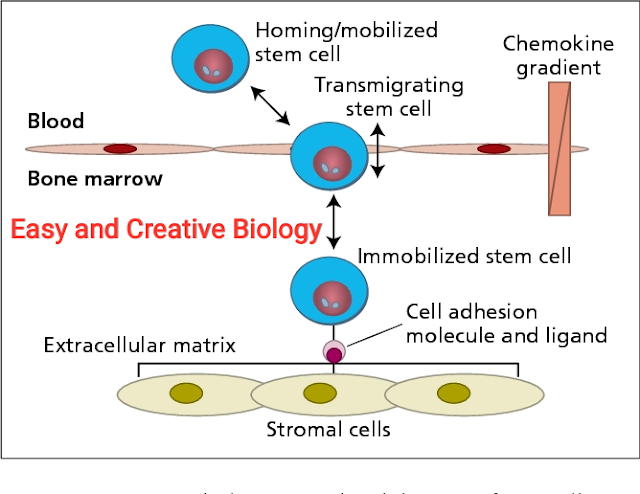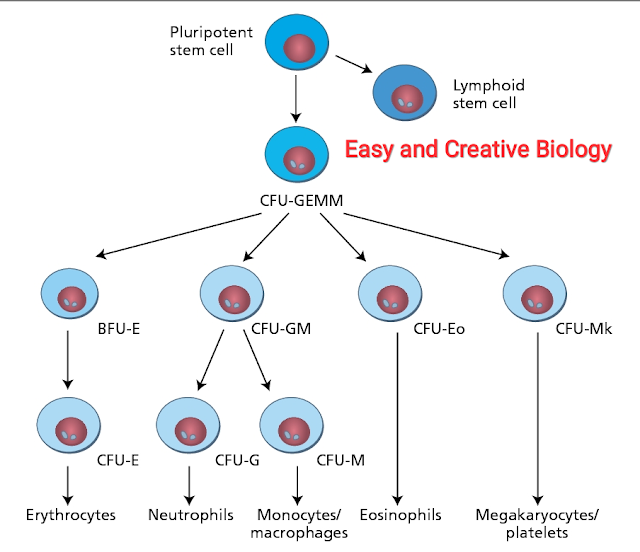It may seem obvious, but blood is made from many things. Blood plasma, for instance, is mostly made of water, carrying proteins and cells along with various chemicals diluted within the plasma or bound to proteins. For instance, sodium bicarbonate – baking soda – is, in fact, a vital chemical that our bodies use to maintain a healthy level of blood acidity.
Other than the plasma, there are the “formed elements” of the blood: the red and white blood cells along with the clot-causing platelets. These are created mostly in the bone marrow when we are adults, and they circulate for a while before being broken down and recycled in the spleen.
Within the bone marrow, there are ‘haematopoietic’ (blood-making) stem cells. These are generally long-term hematopoietic stem cells, but each of them can leave the bone marrow and change its gene expression before dividing to form one short-term hematopoietic stem cell and one long-term one, which is returned to the bone marrow, keeping the number of long-term cells constant.
Various hormones in the blood can then interact with the short-term hematopoietic stem cells, causing it to form either a common myeloid progenitor cell, which makes most blood cells, or a common lymphoid progenitor cell, which makes most immune cells, depending on the hormones that the cell detects.
At this point, the two types of cells can change (differentiate) into all of the blood cells in the circulatory system, depending on what further hormonal ‘instructions’ they are given.
The loss of stem cells is a hallmark of aging. The number of hematopoietic stem cells in the bone marrow decreases with age, as does their activity. This makes the formation of new blood and immune cells more difficult, decreasing the body’s ability to fight disease or recover from blood loss.
The reduced amount of blood cells also reduces the amount of oxygen that the body can take in, causing shortness of breath and making exercise difficult. Perhaps to compensate for this, the percentage of haematopoietic stem cells which are focused on creating red blood cells increases in comparison to the amount of immune cell-making stem cells [1]. This reduces the number of hematopoietic stem cells focused on maintaining the immune system, leading to the immune system
weakening. This prevents the repair of other forms of damage and allows opportunistic infections to appear in the body, leading to illness, disease and discomfort. All of this contributes to the growing frailty and disability that is associated with old age.
A possible solution :


 |
| Figure : Transcription factors involved in lineage selection by haemopoietic stem and progenitor cells. |
Recently, researchers have succeeded in producing new hematopoietic stem cells from a population of common myeloid and lymphoid progenitor cells through chemicals known as Yamanaka factors, which induce pluripotence [2]. This allows cells descended from hematopoietic stem cells to become hematopoietic stem cells again.
This makes it a plausible approach to take cells from a patient, turn them into hematopoietic stem cells, and then return them. This might be a possible solution to replenishing the dwindling pool of hematopoietic stem cells and avoiding the age-related diseases associated with stem cell depletion.







No comments:
Post a Comment